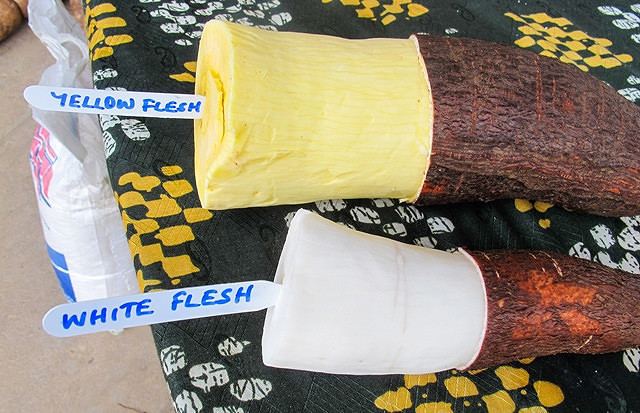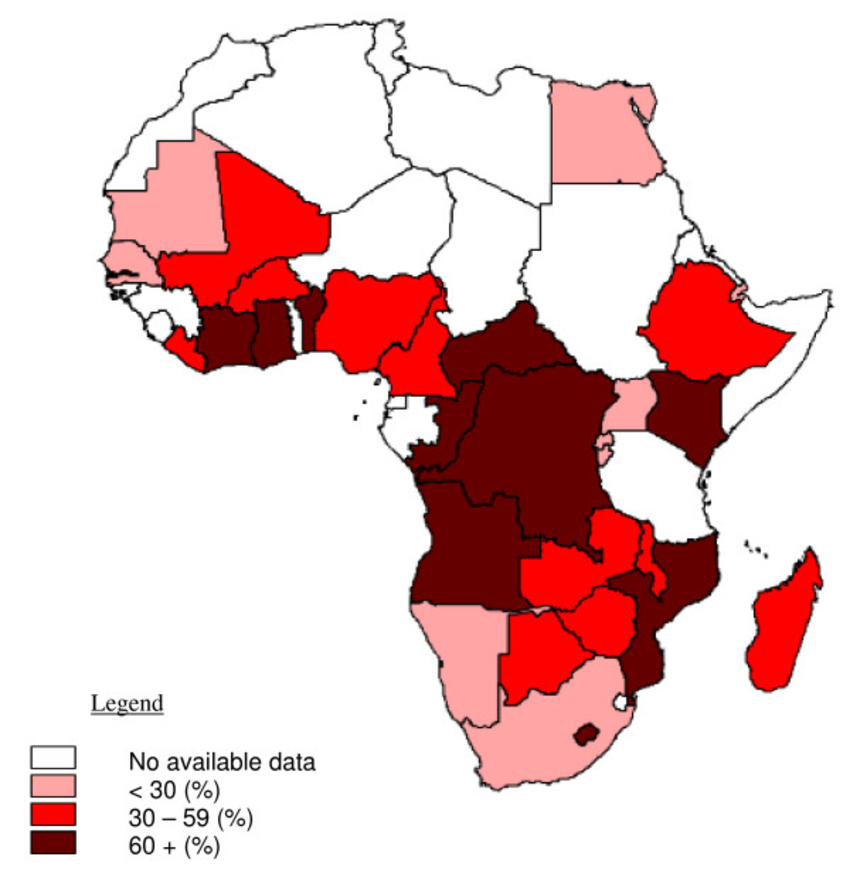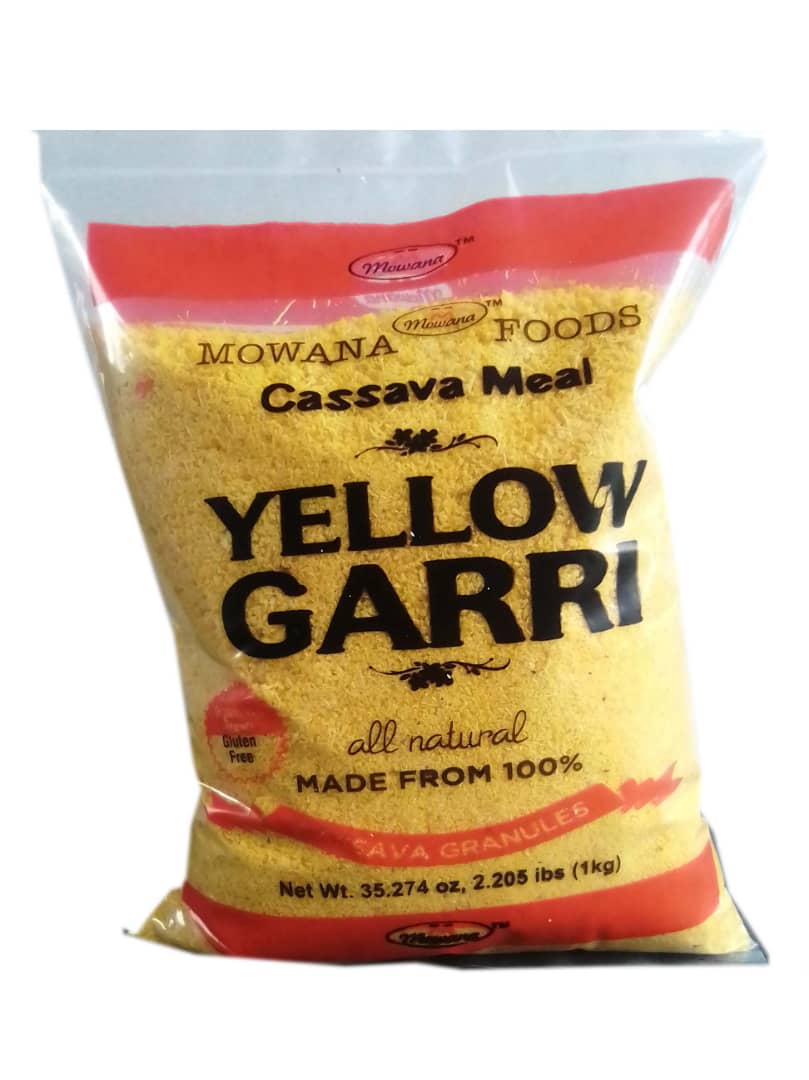Golden cassava varieties (Vitamin A fortified)
Summary
Millions of people in Sub-Saharan Africa are relying on cassava as the main food staple, but the crop varieties that are commonly grown by farmers have low levels of vitamins and minerals. This is an important cause of widespread malnutrition and hidden hunger on the continent, with 50% of children between 0.5 to 5 years suffering from vitamin A deficiency according to World Health Organization. Insufficient intake of vitamin A is the leading cause of preventable blindness in children, it compromises the immune system increasing the risk of death from diseases like measles, diarrhea and respiratory infections. Conventional and transgenic breeding techniques allow to raise the level of provitamin A in cassava and offer a viable avenue to sustainably improve nutrition in rural communities and add value for farmers. Roots of so-called golden or yellow-fleshed cassava are packed with beta-carotenoid which give its characteristic color, and after ingestion these compounds are converted into vitamin A by enzymes as per the need in the body, which results in balanced nutrition unlike is the case for synthetic supplements. A range of golden cassava varieties have been released and are marketed in Sub-Saharan Africa, and through close collaboration between seed companies, farmers, policy makers and researchers these seed technology has been successfully scaled in major growing areas.
About the Solution
Golden cassava varieties can be developed by crossing natural lines that have elevated provitamin A content with elite land races and hybrid lines that got high yield potentials and improved agronomic traits such as disease resistance and drought tolerance. These biofortified varieties are containing six to 15 micro-grams of beta-carotene per gram, which makes the roots yellow. Breeding techniques assisted by genetic markers enable rapid development of golden cassava varieties that contain 2 to 3 times more provitamin A than the original parent material from which it was developed, reaching levels that allow to fulfil a large part or all of the nutritional requirements in communities who depend on this food as staple. Genomic modification is further used to silence the activity of enzymes that breakdown provitamin A, and does not reduce yield potential and interfere with other agronomic traits. Scaling programs for golden cassava in Sub-Saharan African countries demonstrated to be highly effective in reducing vitamin A deficiency and related health issues in children and adults, and have boosted value creation for farmers at the local and regional scale by increasing the production and value of grain.
Golden cassava varieties are highly suitable and cost-effective for tackling malnutrition in rural communities that rely on the crop as staple food. Lines of provitamin A bio-fortified cassava are available for a wide range of growing areas in Sub-Saharan Africa, and can be adapted to the conditions in any type of agro-ecosystem. Studies on public acceptance show that consumers do not object to the color and like the flavor of provitamin A enriched cassva. There is a range of open pollinating lines of golden cassava that can be multiplied by community and private enterprises that enable to rapid scaling and commercialization in growing areas. Hybrid types of provitamin A enriched cassava typically possess other improved traits that make them highly appropriate for farming systems where production is limited by diverse challenges, but are more expensive to buy.
Golden cassava varieties have been developed that are suitable for major production zones in African countries and achieve a similar or higher yields than natural or hybrid lines under a range of soil and weather conditions; e.g., UMUCASS 36, UMUCASS 37, and UMUCASS 38. In Nigeria and Benin various lines of vitamin A fortified cassava have been successfully released to hundred thousands of farmers.
Yellow-fleshed cassava varieties are multiplied and cultivated in the same way like any other cassava crop, in which cuttings taken from one stand are reused to plant another field. Caution has to be exercised by farmers that planting materials are free of diseases symptom when transfers are made between fields in order to control infections and associated yield losses. Different modes for planting can be employed depending on rainfall conditions, cuttings are best placed horizontally and covered entirely with soil in areas with a dry climate, and can be planted vertical or angular in humid areas with high precipitation. Recommended soil and fertilizer management for particular growing areas and conditions have to be adhered to achieve high root yields. Limitations in the availability of nutrients and water, soil compaction and weed encroachment have to be addressed for making sure that the use of disease resistant cassava varieties increases production levels. Because of their high nutritional value, roots from golden cassava varieties are perfectly suited for manufacturing of flour or processed foods, such as bread, garri or crisps, which can be retailed on local and international markets.
Commercialization
Commercially available
Solution Images
Institutions

Accompanying Solutions
Integrated weed, pest and soil management system (GAP), Seed bulking for cassava multiplication



